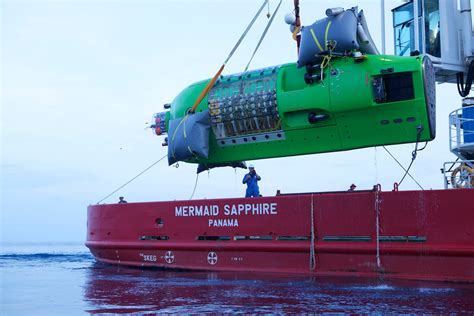deep sea challenger - deepsea challenger thruster : 2024-11-02 deep sea challenger• Oceans portal• Challenger expedition – Oceanographic research expedition (1872–1876)• Deep-sea exploration – Investigation of ocean conditions beyond the continental shelf• See more deep sea challengerThe Rouge Allure L’Extrait is one of the best high-pigment lipsticks I’ve tried. They are ultra creamy, smooth one swipe wonders with a comfortable hydrating feel. Formula adheres nicely to the lips (almost hugs them!) and stays put remarkably well. No bleeding, sliding, creeping!
15 Reviews. $130.00. Size: 3.4 oz. 1.7 oz. 3.4 oz. ADD TO BAG. Check in-store availability. Earn points on this purchase. Sign in or create an account. Summary. CHANEL .
deep sea challenger• Oceans portal• Challenger expedition – Oceanographic research expedition (1872–1876)• Deep-sea exploration – Investigation of ocean conditions beyond the continental shelf• See moreEarly divesIn late January 2012, to test systems, Cameron spent three hours in the submersible while submerged just below the surface in Australia's Sydney Naval Yard. On 21 February 2012, a test dive intended to reach a . See more
deep sea challengerSeveral other vehicles were developed to reach the same depths, but not all made it.• See more• Media related to Deepsea Challenger at Wikimedia Commons• Official website• Article on usage of Computational Fluid Dynamics during the design process of the Deepsea Challenger See moredeepsea challenger thrusterDEEPSEA CHALLENGE is a historic expedition to the Challenger Deep, the lowest point . DEEPSEA CHALLENGER is a one-person submersible that can reach full-ocean depth. It was built by Acheron Project and piloted by James Cameron to Challenger Deep in 2012, and transferred to WHOI . The filmmaker and explorer descended solo to the deepest point of the ocean in his sub, DEEPSEA CHALLENGER, collecting samples and video. Learn about the challenges, science, and history of . SUB FACTS. Editor’s note: On March 26, 2012, James Cameron made a . James Cameron’s DEEPSEA CHALLENGER submersible deploys technologies unimagined in the 1960s. The craft is much lighter, using a special kind of foam to give it both buoyancy and protection from .On March 26, 2012, National Geographic Explorer-in-Residence James Cameron made . By returning humans to the so-called hadal zone—the ocean's deepest level, below 20,000 feet (6,000 meters)—the Challenger Deep expedition may represent a renaissance in .Incorporating new technologies, designs, and materials, the submersible DEEPSEA CHALLENGER is the product of years of dreaming, planning, building, and testing. From its one-of-a-kind vertical attitude to its .The ultimate diver, the Oyster Perpetual Deepsea Challenge is an extension of the experimental watch created in 2012 to accompany James Cameron in the Mariana Trench. It is a watch that pushes back the .

Editor’s note: On March 26, 2012, James Cameron made a record-breaking solo dive to the Earth’s deepest point, successfully piloting the DEEPSEA CHALLENGER nearly 7 seven miles (11 kilometers) to the Challenger Deep in the Mariana Trench. DEEPSEA CHALLENGE is now in its second phase—scientific analysis of the .On March 26, 2012, James Cameron piloted the DEEPSEA CHALLENGER nearly 11 kilometers (over 6 miles) beneath the surface to Challenger Deep, the deepest spot in the global ocean. The vehicle included a host of technological advances that made the dive possible. One year after the record-setting trip, Cameron transferred the vehicle to .The dive was part of the DEEPSEA CHALLENGE expedition, a partnership with National Geographic that took Cameron, along with fellow pilot Ron Allum and a team of engineers, scientists, educators, and journalists, to the greatest depths of the ocean—places where sunlight doesn’t penetrate and pressure can be a thousand times what we . The DEEPSEA CHALLENGER‘s pilot will be alone, but he’ll spend a lot of the journey talking: He’ll narrate a “dive log” to two small cameras (two are needed to create 3-D video) inside the sphere. He’ll also talk to the surface through several systems—one with a 19-mile (30-kilometer) range underwater. . Also in contrast to the previous manned expedition to Challenger Deep, Cameron's vessel was equipped with arms to take samples from the ocean floor, as well as 3D video cameras, which Cameron used to shoot footage for his 2014 documentary Deepsea Challenge. But like Walsh and Piccard, Cameron experienced some .
$157.00
deep sea challenger